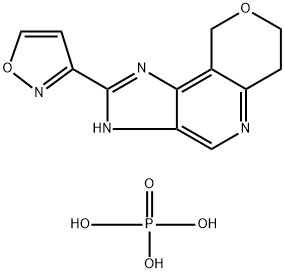151466-23-8
 151466-23-8 結(jié)構(gòu)式
151466-23-8 結(jié)構(gòu)式
常見問題列表
Ki: 34.6 nM (-GABA), 36.2 nM (+GABA).
S-8510 has a relatively high affinity to BDZ receptors. The ratio of Ki values for each ligand with and without GABA is defined as the GABA ratio, which is considered as a biochemical index for BDZ receptor ligands. The GABA ratio for S-8510 or CGS8216 is close to the value for flumazenil which is considered as an antagonist or a very weak agonist. S-8510 (10 -7 M) enhances LTP and this enhancement is antagonized by BDZ receptor antagonist, flumazenil. Flumazenil itself does not atfect LTP or evokes responses prior to tetanic stimulation. S-8510 has no effect on the field evoked potential up to 10 -5 M. However, S-8510 increases the amplitude of the population spike at a dose of 10 -4 M, and this effect is completely antagonized by concomitant application of flumazenil (10 -4 M) .
S-8510 or CGS8216 could cause lethal convulsion only in combination with more than 90 mg/kg of PTZ. The proconvulsant activity of S-8510 appears to be selective for PTZ-induced subconvulsive state. Scopolamine decreases the time spending in the area around the platform, indicating the amnesic action of scopolamine. S-8510 and CGS8216 reverses this scopolamine-induced amnesia. S-8510 improves the memory impairment induced by diazepam in the water maze and passive avoidance paradigms as well. S-8510 dose-dependently increases the ACh level up to 100 mg/kg. Both S-8510 and PTZ increases the extracellular level of NA in the hippocampus in a dose-dependent manner. Anxiogenic actions of S-8510, CGS8216 and FG7142 are examined in the water lick conflict paradigm of Wistar rats. S-8510 and CGS8216 fail to affect this behavioral paradigm up to 30 mg/kg. S-8510 significantly decreases the immobility time in the forced swimming test using ddY mice at 40 to 80 mg/kg in a dose-dependent manner. In the tetrabenazine-induced ptosis model, S-8510 significantly reduces the extent of ptosis induced by tetrabenazine at doses more than 10 mg/kg. Again, S-8510 reduces the extent of ptosis only by 39% even at the maximum dose, whereas imipramine exerts more pronounced effects (by about 80% at a dose of 20 mg/kg).